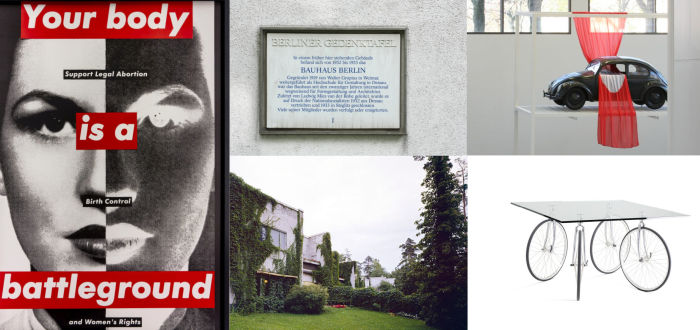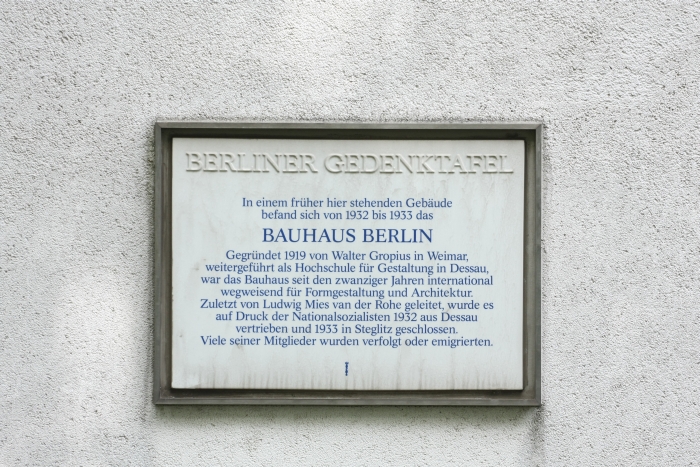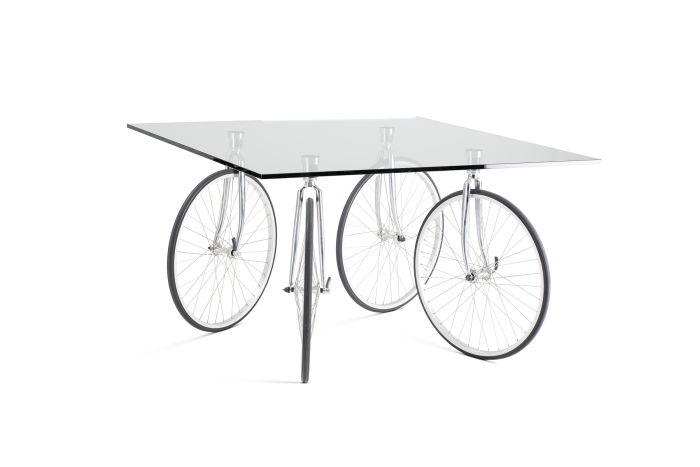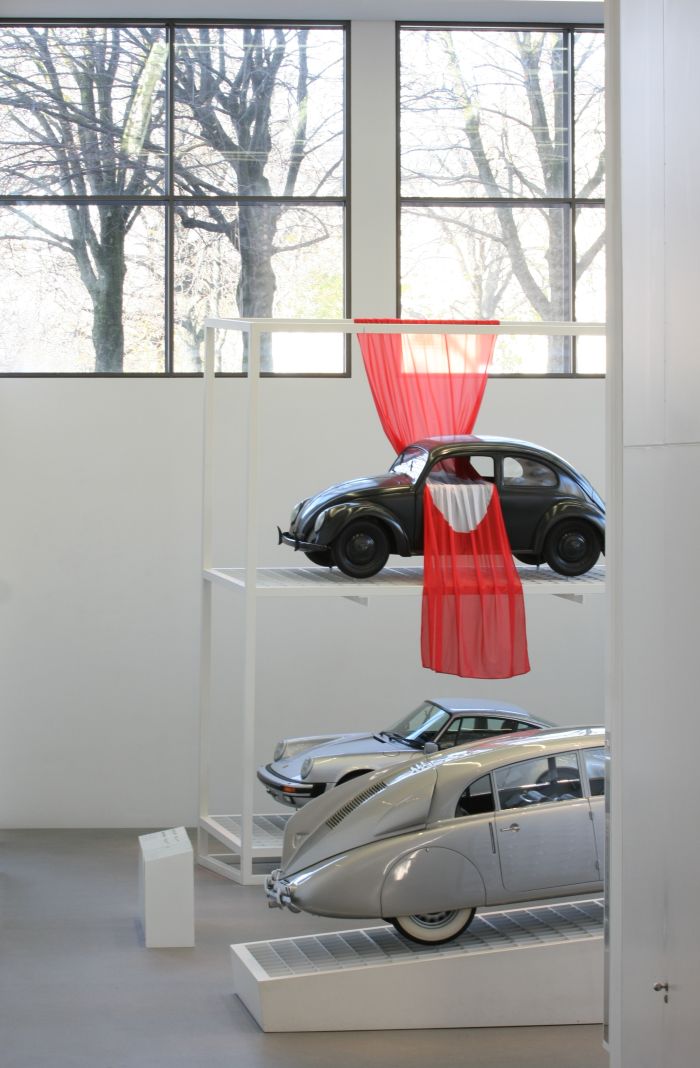5 New Architecture & Design Exhibitions for September 2019
Whereas in the natural world spring ushers in new life but once a year, in the design museum world re-awakenings are biannual: a spring spring as curators awake from their winter hibernation and an autumn spring as they awake from their summer dormancy. Both bringing forth not only the promise of growth, energy, of a new esprit, of new experiences, new sensations, but confirming the eternal nature of existence, that we are but a moment on an endless spiralling continuum…….
Our five new stimulations for September 2019 can be found in Berlin, Helsinki, Weil am Rhein, Stockholm and ‘s-Hertogenbosch…….
“Das Bauhaus in Berlin-Steglitz 1932-1933” at the Siemens-Villa, MSB Medical School Berlin, Germany
As this Bauhaus anniversary year approaches its end, it is only right and proper that thoughts turn to the end of Bauhaus, and those last months in Berlin: months which far from being about the reform of creative education, the connections between art, craft and industry or the direction of society as had been the case in Dessau and Weimar, were for all about survival in an increasingly hostile environment. And months that exist today as little more than archive documents and a greying plaque: the actual building where Mies van der Rohe et al attempted to keep things going having long since been demolished. A reminder that much as post-War East Germany did it’s best to extinguish memory of the institution, in immediate post-War West Germany Bauhaus’s star didn’t shine quite as brightly as it does today.
Whereby, Das Bauhaus in Berlin-Steglitz 1932-1933 is neither an initiative from a museum nor being staged in one; rather, is an initiative by the medical historian Dr. Andreas Jüttemann and is being staged on the campus of Berlin’s private MSB Medical School Berlin. A state of affairs which could tend to indicate that in terms of Bauhaus museum’s are more interested in the objects than the history. But that can’t possibly be true.
Promising a presentation of photos and documents Das Bauhaus in Berlin-Steglitz sounds like being a compact affair, and presumably one devoid of objects, Bauhaus Berlin not only having no workshops to match those in Dessau and Weimar, but also realising ever fewer commercial products as the Nazis increased the pressure on Bauhaus’s partners to sever their links; but in this context size is less important, content is decisive, important, and Das Bauhaus in Berlin-Steglitz should allow not only for a better understanding Bauhaus, but also a better understanding of our own contemporary society and our own increasingly hostile environment.
Das Bauhaus in Berlin-Steglitz 1932-1933 opens at the Siemens-Villa, MSB Medical School Berlin, Calandrellistraße 1-9, 12247 Berlin on Wednesday September 4th and runs until Friday December 20th
“Alvar Aalto’s Refined Landscapes” at the Museum of Finnish Architecture, Helsinki, Finland
Whereas Alvar Aalto’s work is often quoted in relation to nature, the nature in Aalto’s work is often ignored. Or at least overseen. If you will, one can’t always see the trees for the birch. With the exhibition Alvar Aalto’s Refined Landscapes the Museum of Finnish Architecture aim to rectify that through foci not only on Aalto’s interest in and inspiration from both natural landscapes and also cultivated gardens, be they from traditional Islamic or Japanese cultures or indeed his own contemporary Finland, but also how he integrated his buildings into their surrounding landscape, how he, as the museum note, “felt that architecture should be like a final touch added to an otherwise finished picture”. And thereby promises to allow for some very welcome, and important, fresh insights into the man and his work and thus the promise of allowing us all to approach a better understanding of the man and his work.
And for considerations on the connection, the relationship, between the built environment and the natural environment, connections and relationships which will play an important role in the future of our plant and which we’ve arguably neglected for far too long. That for far too long, if you will, we haven’t see the trees, because there aren’t any.
Alvar Aalto’s Refined Landscapes opens at the Museum of Finnish Architecture, Kasarmikatu 24, 00130 Helsink on Thursday September 26th and runs until Monday January 6th
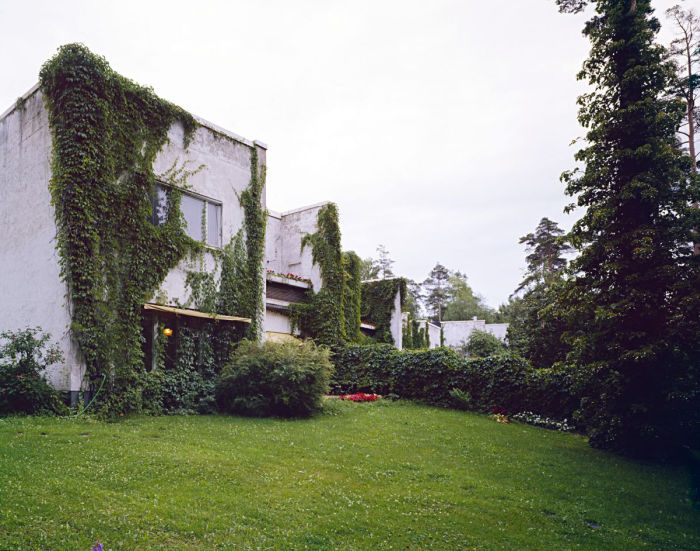
Townhouses for officers of the Sunila factory in Karhula, Kotka by Alvar Aalto (Photo: Simo Rista/Museum of Architecture, courtesy Museum of Architecture)
“Objects of Desire: Surrealism and Design 1924 – Today” at the Vitra Design Museum, Weil am Rhein, Germany
For all Surrealism’s contemporary vigour, from Washington to Moscow and Brasília to Washington new generations of artists are pushing the genre ever further, a contemporary strength deliciously underscored by British protagonist Boris Johnston painting the words “Ceci n′est pas un parlement” over the Palace of Westminster, Surrealism isn’t a recent artistic development, rather one that arose in the 1920s, and so in that period when creatives of all hues were looking for new ways forwards for society, new understandings of the social order and our place in the world, for all in context of the developing political, economic and technological realities.
Promising an exhibition which places works of art by the likes of Salvador Dalí, René Magritte or Marcel Duchamp opposite works of design by the likes Nacho Carbonell, Front or Dunne & Raby, and arguably Marcel Duchamp, Objects of Desire aims to instigate a dialogue between Surrealism and Design and thereby explore not only the influences and congruity between the two, but also the borders and differences.
And in doing so promises to provide for new perspectives not only on the development of design between the wars, the way designers responded to the challenges of that period but also how subsequent generations have used the lessons learned and applied them as we have spiralled ever forward towards our own contemporary design reality. And social and political surreality.
Objects of Desire: Surrealism and Design 1924 – Today opens at the Vitra Design Museum, Charles-Eames-Straße 2, 79576 Weil am Rhein on Saturday September 28th and runs until Sunday January 19th
“1989 – culture and politics” at the National Museum, Stockholm, Sweden
2019 is not only the 100th anniversary of the founding of Bauhaus Weimar, nor only the 50th anniversary of the first manned moon landing, it is also the 30th anniversary of the fall of the Berlin Wall, technically the whole Iron Curtain, and events that, quite aside from their own significance, stand symbolic for the global changes that occurred as the 1980s ceded to the 1990s: as one of Sweden’s leading cultural commentators correctly identified in 1986, at that period global society was undergoing a period of extreme evolution, was entering The Final Countdown. Blast-off coming in 1989. If however, and against all predictions, we didn’t all leave together. The tanks in Tiananmen Square stopping that.
Taking the fall of the Wall as its impetus, the Swedish National Museum aim to discuss and explore the changes and realities of the period through works of art, design and culture as varied as political posters, early mobile phones, the World Wide Web, shoulder pads, artists such as William Kentridge, Ingrid Orfali or Tracey Moffatt, designers such as Ron Arad, Jasper Morrison or Philippe Starck and music videos by the likes of Madonna or Roxette. The latter indicating that as much as being about the global events 1989 – culture and politics will also have a domestic focus: the late 1980s being a very important period politically and culturally in Sweden. And a period of change which, as everywhere, is still tangible today. Not least round our way. No 1989, no smow Blog. And what would have become of us?
1989 – culture and politics opens at the National Museum, Södra Blasieholmshamnen 2, 111 48 Stockholm on Thursday September 5th and runs until Sunday January 12th

How times change! Barbara Kruger, Untitled (Your Body is a Battleground), 1989, (Photo: Jochen Arentzen, Courtesy of the artist and Sprüth Magers.)
“Design of the Third Reich” at the Design Museum Den Bosch, ‘s-Hertogenbosch, Netherlands
As the Design Museum Den Bosch note, “We are quite used to museums showing the good side of culture. Indeed, design is often presented as contributing to a better world”
And so sometimes, nowtimes?, it’s good to be reminded that isn’t necessarily always the case. That design can be used by ill-minded individuals for nefarious purposes.
Nazi Germany offering a particularly good, irrefutable, apposite, example, and that across creative genres, be that, for example, through the use of objects of everyday use to engender an understanding of German identity, the use of graphic design to improve the accessibility of their propaganda, the scenography of their rallies, or objects such as the Volkswagen Beetle, Volksempfanger radio or the Messerschmitt Bf 109 as tools of war, both on the domestic front and the international battlefield.
Staged in context of the 75th anniversary of the liberation of Noord-Brabant Design of the Third Reich promises to present objects of architecture, design, literature and film borrowed from museum’s in Holland and Germany and via which the curators aim to both explore the Nazis’ use of design and for all initiate an open discussion on how design, and designers, served and advanced the aims of the NSDAP.
And what better time than now to reflect on, and openly discuss, the dangers of design, of designers, in murderous, racist, totalitarian regimes……….?
Design of the Third Reich opens at the Design Museum Den Bosch, De Mortel 4, 5200 AA ‘s-Hertogenbosch on Sunday September 8th and runs until Sunday January 19th
Tagged with: 's-Hertogenbosch, 1989 – culture and politics, alvar aalto, Bauhaus, Berlin, Den Bosch, Design Museum Den Bosch, Design of the Third Reich, Helsinki, landscape, Objects of Desire: Surrealism and Design, Steglitz, Stockholm, Vitra Design Museum
